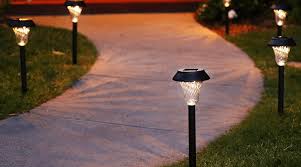Electrical Safety
Electricity is all around you. It’s the most common energy source, and it’s very powerful. Contact with electricity is dangerous and can cause electrical shock, burns or even death if the shock is severe.
Conductors are things that carry (conduct) electricity easily, including:
Metal
Water and wet things
Tree
People
Nonconductors (insulators) do not carry electricity, including:
Glass
Plastic
Rubber
Porcelain
Clean, dry wood
Steer Clear of Electrical Power Equipment
Transmission line towers carry electricity above the ground.
Substations help reduce the amount of electricity before it enters homes. They are often fenced in.
Pad-mounted transformers are sometimes used for underground wiring. These are locked metal cabinets on cement pads.
Utility poles and power lines carry electricity into homes.
Insulators and transformers are found on many poles. Insulators keep the electricity in the power lines, and transformers reduce the amount of electricity.
Meters and other electrical equipment can be located on the outside of homes or buildings. Meters measure the amount of electricity used.
Play it Safe Outdoors
Fly kites, model planes, balloons and other toys in open spaces, such as fields or parks.
Use only non-conducting materials for kites, such as plastic; paper; clean, dry wood; and string.
Never use wire, metal or foil.
Never climb a utility pole or nearby tree if a toy gets caught in power lines. Call your electric utility.
Don’t fly toys in the rain or in a storm.
Don’t release metallic balloons outside. They can conduct electricity.
Never play on or near power equipment.
Never touch any outdoor wires, or anything touching them, with your body or any object.
Call Diggers Hotline (800-242-8511) before digging in your yard.
Watch out for overhead wires when you’re around trees, or if you’re using a ladder, pool skimmer or any other long object.
Look before you climb any tree to be sure no wires run through or near it. Your weight may cause a branch to touch a wire.
Keep electrical appliances and toys away from water, including rain, wet ground, swimming pools, sprinklers and hoses.
Protect outdoor electrical outlets with weatherproof covers and GFCIs (ground fault circuit interrupters) to protect against shock. Indoor outlets near water sources should also have GFCIs.
Don’t touch or use damaged plugs and cords on electrical appliances and fixtures.
Make sure tools and appliances are approved for outdoor use. They are made with heavier wiring, and special insulation or three-way grounded plugs.
Stay safe Indoors, too.
Never put your finger or anything other than an electrical plug or safety cap in an outlet.
Pull by the plug, not the cord, when unplugging an appliance. Be alert for damaged plugs and cords.
Limit the number of appliances plugged into each outlet.
Unplug small electrical appliances and toys when you’re not using them.
Don’t use electrical appliances when you’re wet, have wet hands or are standing in water.

HAVE YOUR CHRISTMAS LIGHTS BEEN CUT? BLAME THESE TROUBLEMAKERS
Almost nothing kills the holiday spirit quite like looking out your window to find that the Christmas lights you spent hours hanging outside are no longer lighting up the winter night. Even worse is finding that the problem isn’t just a bulb or strand that’s burnt out but that the wires have been cut and are beyond repair. But before you go blaming vandals, consider that the culprit might instead be a common neighborhood critter.
That’s right. Many of the animals that scurry around outside our houses are fond of chewing on wires and can force our outdoor Christmas lights to go dark. Squirrels, mice and rabbits are all known offenders. Squirrels even sometimes steal the bulbs from outdoor lights, thinking they are nuts.
Rodents like squirrels are especially common culprits because their teeth are constantly growing, so they have to chew on objects to prevent them from getting too long, according to the lighting blog 1000 Bulbs. While sticks and twigs are their usual choice, holiday lights are too good of a temptation to pass up when they are so readily available during the holiday season.
The Plainfield Police Department gets enough calls about vandals destroying holiday light displays that it has posted on Facebook each December for the past few years about another likely cause: wildlife chewing through wires.
It turns out electrical wires are covered in a soy-based coating that rodents and other animals find quite tasty, according to Forbes. Our Christmas displays aren’t the only place the critters are finding to feast. Many of the electrical wires in our cars are covered in the soy-based coating as well, causing hefty car repair bills for some unfortunate vehicle owners.
Different Types of Outdoor Wall Lighting
Whether you need security lights, ambient lighting for a particular area in your yard, or light fixtures to accessorize your home’s exterior, here is our ultimate guide to outdoor wall lighting for your home. Discover the different types of outdoor wall lighting that you can take advantage of to boost your home’s outdoor aesthetics.
Outdoor Wall Lighting Buying Guide
When considering outdoor wall lighting, or outdoor sconce lighting, there are several things you should consider. Some consumers choose outdoor lighting strictly for design, while others want lighting for security. A variety of motion-triggered flood lights, for example, work well for security. However, you certainly don’t have to sacrifice style for function.
Exterior Sconce Purposes
Your first consideration when shopping for lighting for home’s exterior is the purpose that you want your lights to serve. This will, to some degree, dictate the types of options that will work for you
Many homeowners seek outdoor lighting for security. There are many wall-mounted lights that work well for this, from motion detector lights to lights on a timer to lights that can be turned on and off manually. Floodlights and bright spotlights, whether they are motion-sensor-triggered or not, often work well for security.
Security Lights
Many homeowners opt for outdoor lighting to provide security. Many crimes are crimes of opportunity. This means that if you can make your home a less easy target for burglars, they will often move along to another property. One way to do this is by providing enough lighting so that there are no hiding places for predators.
Types of Modern Solar Lights: Uses, Benefits and Guide
Solar lights are the new breakthrough in technology. Cost-efficient and used for both indoor and outdoor lighting purposes, they are a new and advanced technology which cannot be even compared to the conventional methods of lighting—bringing a lot of benefits to the table.
If you think of solar-powered lights as ones that utilize the basic mechanism of converting solar energy into electricity to power the lights, there is a lot more knowledge behind this. In today’s guide, we will help you understand:
Everything that defines solar LED lights technology and how it works.
The benefits of using solar lights compared to conventional lights.
The concrete uses and benefits of solar lights in different scenarios.
The classification of solar lights, when and what they are called and where/when they are used (as well as their benefits).
The best solar light products and useful buying guides.
In a nutshell, you have a chance to learn all the important things that you need to know about solar-powered lights, the best solar lights out there, the average prices and the value for money on the most popular products. So, let’s begin.
How does solar work and the benefits of solar lighting
As we have already hinted, the main principle of how solar lighting works is very simple. These lights collect solar energy and transform it into lighting—through a technology called the photovoltaic effect which is used in a solar panel. This effect collects solar energy throughout the day and stores it in a rechargeable gel-cell battery that can be used later in the evening when there is no sunlight.
Solar LED lights can be installed in many different areas. They offer amazing environmental benefits and can burnish a building owner’s green credentials, serve as a unique selling point for attracting and retaining tenants and help buildings or retrofits to quality as LEED points.
Things You Should Know About Your Home When Lightning Strikes
How Lightning Affects Your Home
thunder and a high number of lightning strikes, sometimes turning more severe and producing hail and tornadoes. Let’s focus on lightning and how it affects your home – specifically the electrical system of your home.
What Happens When Lightning Strikes The Home
If your home has been directly hit by lightning, first call the fire department to have them check everything out. Lightning could strike anywhere on the home, which could lead to fire but will most likely cause surge damage. Since the home is all connected electrically, you may see some melted outlets, the tv no longer turns on, and while the oven works fine, the clock no longer works. Generally, the damage is pretty contained to those items. If an outlet has melted the outlet needs to be replaced, but there aren’t many concerns for the wiring in the home. In a few cases, the heat from the outlet will affect the coating on wires coming into the outlet, when that happens the wires need to be cut back to an unaffected area typically it’s just an inch or two.
What Happens When Lightning Strikes Nearby
Since lightning takes the path of least resistance, a nearby strike on your property or in your neighborhood could cause surge issues in your home. Surge issues tend to be pretty similar whether a nearby lightning strike has affected your home or it was directly struck by lightning.
Lightning Protection For The Gas Line
Here’s what National Electrical Code 250.106 says about lighting protection: The lightning protection system ground terminals shall be bonded to the building or structure grounding electrode system. Or in other words, the system that needs lighting protection, in this case, the gas line, should be connected to the homes main ground system, usually found at the main breaker panel. Lightning protection for your gas system is required when corrugated stainless steel tubing, or CSST, is present in the piping system. If you only have conventional black pipe with threaded fittings, lightning protection is not required on your gas system. The 2009 edition of NFPA 54, National Fuel Gas Code includes new requirements for lightning protection. According to 7.13.2 CSST gas piping systems shall be bonded to the electrical service grounding electrode system at the point where the gas service enters the building. The bonding jumper shall not be smaller than 6 AWG copper wire or equivalent. Again, this is only required when CSST is present. Sometimes this is an easy fix, and other times it’s a bear to get from the ground at the main panel all the way to the gas line. Every situation is a little different, and we should talk about it one on one.
Lightning Rods
While we don’t offer lightning rod installation, some companies specialize in this area. Most people are probably familiar with the general idea of a lightning rod, a large metal post staked to the roof, so I’ll leave the details up to a lightning rod installation company. The rods should be connected to a ground wire which goes directly to a ground rod (or two) to give the power a path of least resistance away from your home. When power has reached the earth or slab, it dissipates.

















